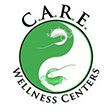1. Q: Why do physical therapists sometimes use ice and sometimes use heat?
A: Ice is generally used to cause a decrease in the localized circulation of a particular area of the body reducing swelling, decreasing inflammation, and decreasing pain. If your injury is acute (new) ice is usually the best therapy to use. Once your condition has changed and the swelling has reduced, heat is often applied to increase circulation, speed up the healing process, and relax spastic muscles.
2. Q: How often do I have to go for physical therapy or rehabilitation?
A: Your frequency of treatment depends on many factors including the severity of your condition, the length of time you have had the problem, your degree of pain, and other medical conditions or considerations you have that might complicate your recovery (such as arthritis, scar tissue, or poor circulation).
3. Q: Why are there so many different kinds of machines and apparatus?
A: Each different kind of apparatus has specific functions.
- Electric muscle stimulation machines – are used to decrease muscle spasm, increase circulation, pump fluids out of areas where swelling exists, and block pain impulses.
- Ultrasound – is a deep, penetrating, micro massage which increases circulation to the deep tissues (tendons, ligaments, joints), moves fluid in and out of areas, relaxes deep muscle tissue, promotes proper healing of scar tissue, helps with pain control.
- Diathermy – is a high frequency treatment used to heat both superficial and deep tissue. With increased heating comes increased circulation, increased oxygenation, increased tissue nutrition, and overall relaxation of soft tissues. Diathermy works over a larger area than ultrasound. Diathermy can be used to heat internal organs such as the lungs to help with healing of chronic respiratory infections.
- Exercise equipment – Exercise machines are used to promote strengthening of specific muscles or muscle groups via precisely guided movements.
- Rubber bands/tubing – Bands and tubing are used to provide light resistance training to muscles forcing the muscles to work in both the contraction and relaxation phase of exercise.
- Exercise Balls – Exercise balls are uniquely suited to promote core stabilization. Core stabilization is strengthening of the muscles that support the trunk, including the back, the abdominals, the gluteus, the hamstring, and the quadriceps. Balls are also used to improve balance and proprioception and can be used to exercise many different muscle groups.
- Wobble Board – helps with strengthening the small muscles of the feet and ankles which has a positive effect on balance, and it helps with coordination and proprioception.
- Treadmill/stationary bike – In addition to cardiovascular workout the treadmill helps to improve gait (walking stride) and balance. The stationary bike helps to improve circulation and rehabilitate hips, knees, and ankles by moving these joints through a range of motion.
4. Q: Will my physical therapy/rehab hurt?
A: Many conditions respond to physical therapy and patients usually feel better after their sessions. They leave with improved range of motion and decreased pain. There are times when pain is experienced. Every effort is made to minimize painful therapies; however, some conditions are painful and as a result physical therapy can be uncomfortable. Utilization of ice and pain blocking therapies often helps to minimize pain.
5. Q: Once I am no longer in pain do I have to keep going for therapy/rehab?
A: Many patients have this question because they have been told that the reason for physical therapy is to reduce pain. While physical therapy does reduce painful conditions, most of the time spent in therapy is to restore range of motion to normal levels and to increase strength and stability to tissues and joints. This requires time as the basic goal is to return these tissues to normal or near normal function. The absence of pain is NOT a good indicator of normal function, and you should ask your physician when they feel you will be at an end point in therapy.
If you are looking for physical therapy in Margate, or one of the surrounding cities, look no further than Care Wellness Center. We have helped restore the health and wellness of many of our patients and we truly believe we can help you too. Call us today and learn how our programs can help you get back on track. Our rehabilitation program is headed by Dr. Bronson Bartolone and serves the residents of Margate, Coral Springs, Coconut Creek and Pompano Beach Florida.
